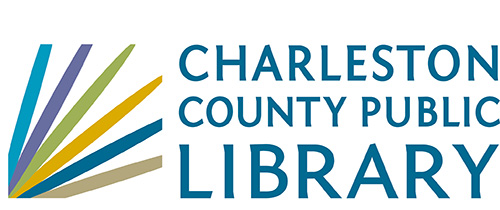Menu
×
Main Library
9 a.m. - 6 p.m.
Phone: (843) 805-6930
West Ashley Library
9 a.m. - 4 p.m.
Phone: (843) 766-6635
Folly Beach Library
Closed for renovations
Phone: (843) 588-2001
John L. Dart Library
9 a.m. - 6 p.m.
Phone: (843) 722-7550
St. Paul's/Hollywood Library
9 a.m. - 5 p.m.
Phone: (843) 889-3300
Mt. Pleasant Library
9 a.m. – 6 p.m.
Phone: (843) 849-6161
Dorchester Road Library
9 a.m. - 6 p.m.
Phone: (843) 552-6466
Edgar Allan Poe/Sullivan's Island Library
9 a.m. - 6 p.m.
Phone: (843) 883-3914
John's Island Library
9 a.m. - 6 p.m.
Phone: (843) 559-1945
McClellanville Library
Closed for renovations
Phone: (843) 887-3699
Edisto Library
9 a.m. - 3 p.m.
Phone: (843) 869-2355
Wando Mount Pleasant Library
9 a.m. - 6 p.m.
Phone: (843) 805-6888
Otranto Road Library
9 a.m. - 6 p.m.
Phone: (843) 572-4094
Hurd/St. Andrews Library
9 a.m. - 6 p.m.
Phone: (843) 766-2546
Baxter-Patrick James Island
9 a.m. - 6 p.m.
Phone: (843) 795-6679
Bees Ferry West Ashley Library
9 a.m. - 6 p.m.
Phone: (843) 805-6892
Village Library
9 a.m. - 6 p.m.
Phone: (843) 884-9741
Keith Summey North Charleston Library
9 a.m. – 6 p.m.
Phone: (843) 744-2489
Mobile Library
9 a.m. - 5 p.m.
Phone: (843) 805-6909
Today's Hours
Main Library
9 a.m. - 6 p.m.
Phone: (843) 805-6930
West Ashley Library
9 a.m. - 4 p.m.
Phone: (843) 766-6635
Folly Beach Library
Closed for renovations
Phone: (843) 588-2001
John L. Dart Library
9 a.m. - 6 p.m.
Phone: (843) 722-7550
St. Paul's/Hollywood Library
9 a.m. - 5 p.m.
Phone: (843) 889-3300
Mt. Pleasant Library
9 a.m. – 6 p.m.
Phone: (843) 849-6161
Dorchester Road Library
9 a.m. - 6 p.m.
Phone: (843) 552-6466
Edgar Allan Poe/Sullivan's Island Library
9 a.m. - 6 p.m.
Phone: (843) 883-3914
John's Island Library
9 a.m. - 6 p.m.
Phone: (843) 559-1945
McClellanville Library
Closed for renovations
Phone: (843) 887-3699
Edisto Library
9 a.m. - 3 p.m.
Phone: (843) 869-2355
Wando Mount Pleasant Library
9 a.m. - 6 p.m.
Phone: (843) 805-6888
Otranto Road Library
9 a.m. - 6 p.m.
Phone: (843) 572-4094
Hurd/St. Andrews Library
9 a.m. - 6 p.m.
Phone: (843) 766-2546
Baxter-Patrick James Island
9 a.m. - 6 p.m.
Phone: (843) 795-6679
Bees Ferry West Ashley Library
9 a.m. - 6 p.m.
Phone: (843) 805-6892
Village Library
9 a.m. - 6 p.m.
Phone: (843) 884-9741
Keith Summey North Charleston Library
9 a.m. – 6 p.m.
Phone: (843) 744-2489
Mobile Library
9 a.m. - 5 p.m.
Phone: (843) 805-6909
Patron Login
menu
Item request has been placed!
×
Item request cannot be made.
×
 Processing Request
Processing Request
Adult mortality trends in Qatar, 1989-2015: National population versus migrants.
Item request has been placed!
×
Item request cannot be made.
×
 Processing Request
Processing Request
- Author(s): Chaabna K;Chaabna K; Cheema S; Cheema S; Abraham A; Abraham A; Alrouh H; Alrouh H; Mamtani R; Mamtani R
- Source:
PloS one [PLoS One] 2018 Sep 25; Vol. 13 (9), pp. e0203996. Date of Electronic Publication: 2018 Sep 25 (Print Publication: 2018).- Publication Type:
Comparative Study; Journal Article- Language:
English - Source:
- Additional Information
- Source: Publisher: Public Library of Science Country of Publication: United States NLM ID: 101285081 Publication Model: eCollection Cited Medium: Internet ISSN: 1932-6203 (Electronic) Linking ISSN: 19326203 NLM ISO Abbreviation: PLoS One Subsets: MEDLINE
- Publication Information: Original Publication: San Francisco, CA : Public Library of Science
- Subject Terms:
- Abstract: Introduction: With the increase of Qatar's total population, primarily due to the influx of healthy male migrant labor, worldwide attention has been focused on deaths among these migrant workers.
Objective: To describe adult mortality trends in Qataris (nationals) and non-Qataris (migrants) from all causes, cardiovascular and circulatory disease, neoplasms, and injuries, 1989-2015.
Methods: We retrieved Qatar's vital registration data by nationality, sex, age group, year, and codes of the World Health Organization's International Classification of Diseases, Ninth and Tenth Revisions. We assessed age-standardized mortality rate (ASMR) trends in Qatar's total population, in Qataris and non-Qataris using Joinpoint regression.
Findings: During the study period, 26,673 deaths were recorded. In 2015, we estimated 60,716 years of life lost (82% in males) in the overall population. In Qataris (both sexes) and in non-Qatari females, all-cause rate decreased significantly and steadily between 1989-2015. In non-Qatari males, it decreased significantly between 1998-2010 probably attributed to a massive influx of healthy migrants. Yearly rates were significantly lower in non-Qataris over 27 years. Reduction in Qatar's total population rates for all causes and for neoplasms can be partially attributed to the healthy migrant effect. For injuries in males, it was lower in non-Qatari. Remarkably, for falls, cause-specific ASMR in non-Qatari males decreased significantly reaching 2.6/100,000 in 2014, suggesting improved safety in the work environment. However, while young adult males in Qatar die predominantly from injuries, young adult females die from neoplasms.
Conclusion: Our study demonstrates that premature death in young adult males and females in Qatar is predominantly due to injuries and neoplasms respectively. These identified causes of death are for a large part preventable and should be addressed appropriately to lower premature mortality among young adults in Qatar.
Competing Interests: The authors have declared that no competing interests exist. - Comments: Erratum in: PLoS One. 2018 Nov 1;13(11):e0207104. (PMID: 30383863)
- References: BMC Public Health. 2015 Sep 22;15:937. (PMID: 26392362)
PLoS One. 2015 May 18;10(5):e0124944. (PMID: 25993053)
PLoS One. 2017 Jun 20;12(6):e0179711. (PMID: 28632794)
Eur J Public Health. 2016 Dec;26(6):992-1000. (PMID: 27312258)
Eur J Public Health. 2017 Feb 1;27(1):117-123. (PMID: 28177440)
Lancet. 2016 Oct 8;388(10053):1459-1544. (PMID: 27733281)
Injury. 2015 Dec;46(12):2521-2. (PMID: 26520361)
Injury. 2015 Sep;46(9):1806-13. (PMID: 25943291)
Bull World Health Organ. 2007 Jun;85(6):474-81. (PMID: 17639245)
Prev Chronic Dis. 2013 May 09;10:E76. (PMID: 23660118)
BMC Public Health. 2015 Feb 28;15:204. (PMID: 25885030)
Int J Womens Health. 2010 Sep 17;2:311-8. (PMID: 21151678) - Publication Date: Date Created: 20180926 Date Completed: 20190304 Latest Revision: 20240401
- Publication Date: 20240401
- Accession Number: PMC6155516
- Accession Number: 10.1371/journal.pone.0203996
- Accession Number: 30252887
- Source:
Contact CCPL
Copyright 2022 Charleston County Public Library Powered By EBSCO Stacks 3.3.0 [350.3] | Staff Login


No Comments.